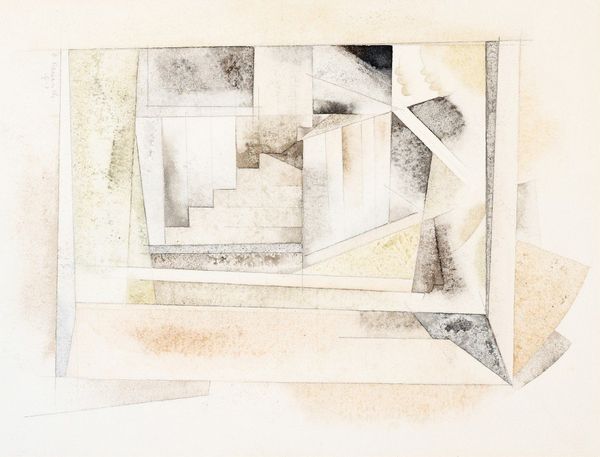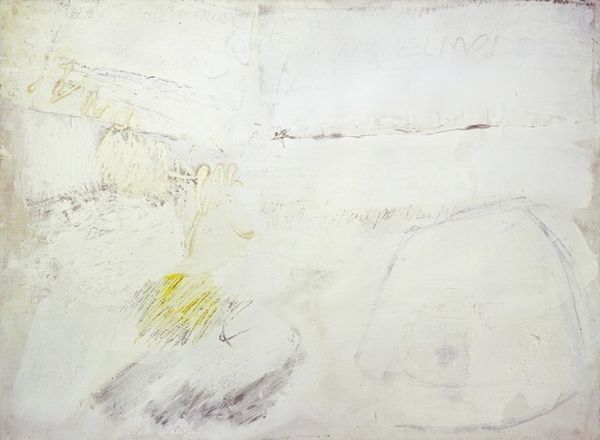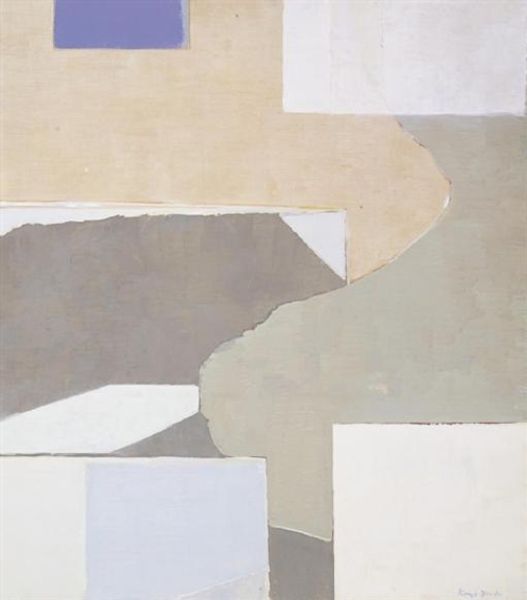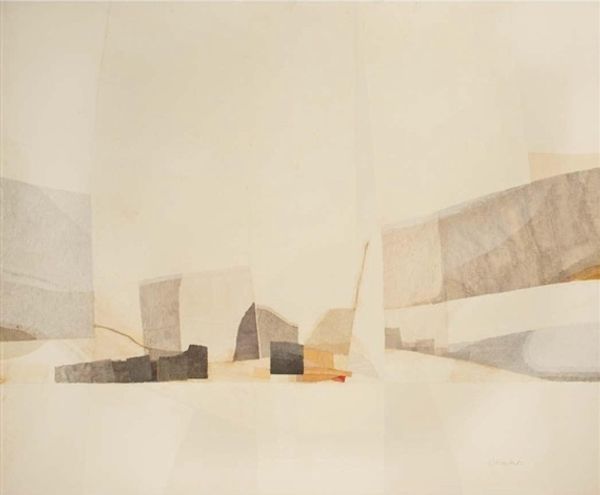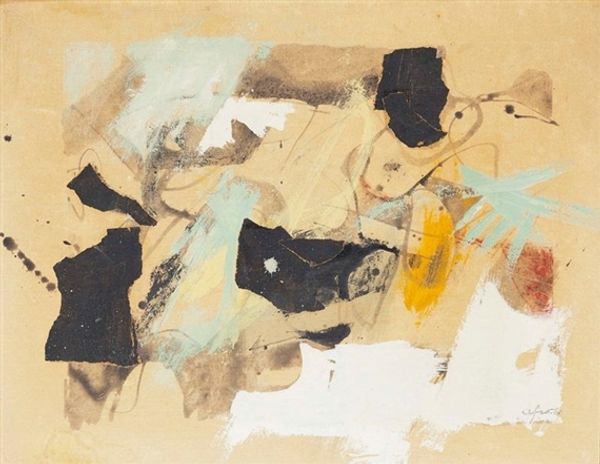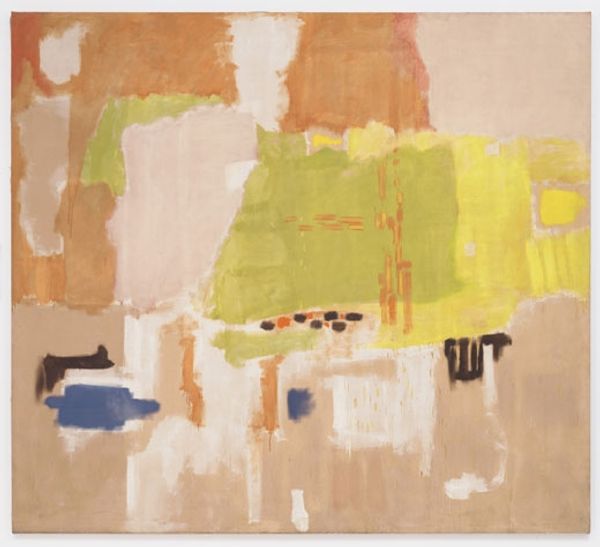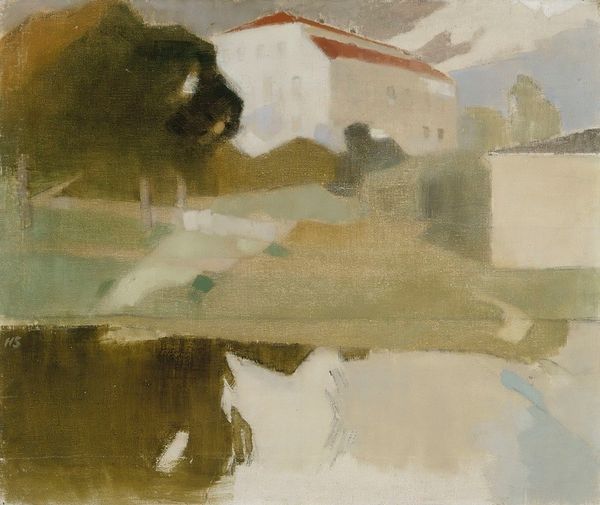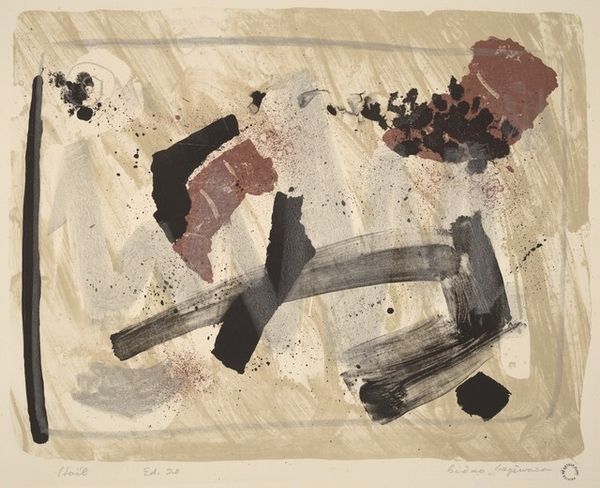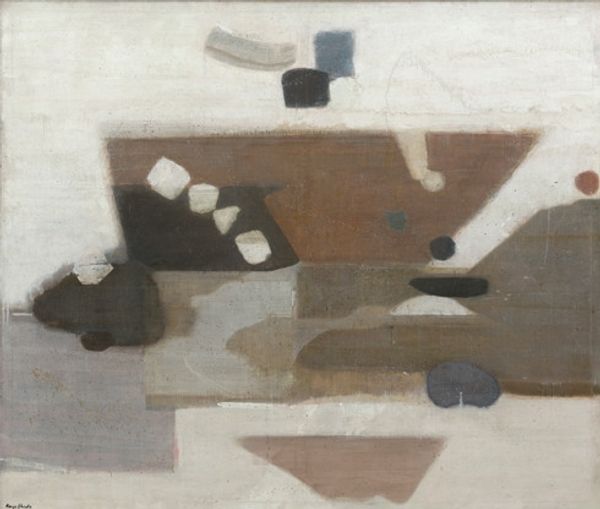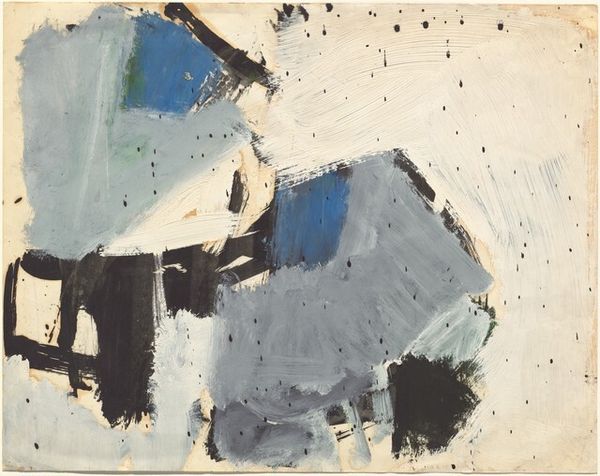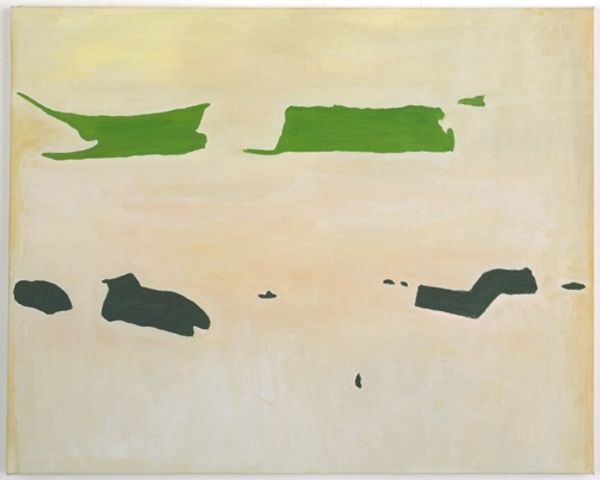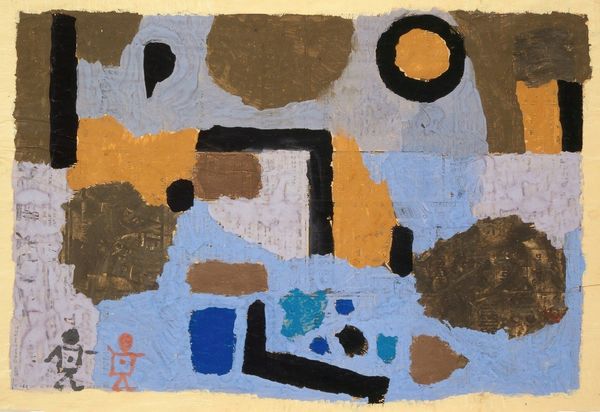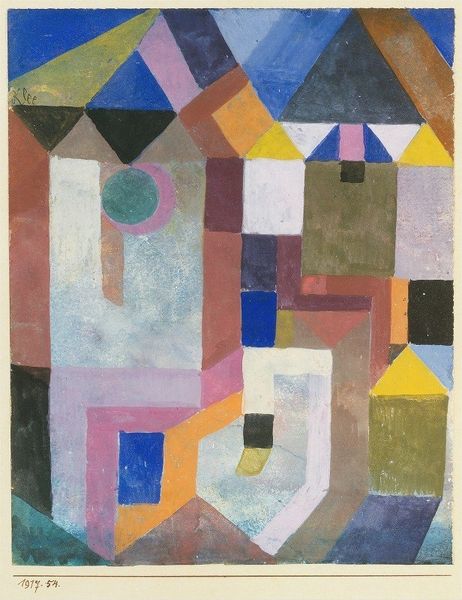
#
acrylic
#
water colours
#
painted
#
possibly oil pastel
#
text
#
acrylic on canvas
#
spray can art
#
underpainting
#
pastel chalk drawing
#
painting painterly
#
watercolor
Copyright: Kenzo Okada,Fair Use
Curator: Kenzo Okada's "Footsteps," created in 1954 and currently held in The Phillips Collection, presents an intriguing composition. What's your immediate take? Editor: A serene but somewhat melancholic landscape. I see the materiality as subdued, almost chalky. Is it acrylic and pastel, perhaps? The marks certainly suggest a delicate hand at work. Curator: The painting indeed utilizes acrylics, perhaps with watercolor elements and oil pastel. Considering its postwar creation, Okada, a Japanese émigré, found himself exhibiting alongside the Abstract Expressionists in New York. We have to consider this period of transition and anxiety in his artistic development. Editor: Right, and that context of artistic assimilation is critical. I’m particularly interested in what appears to be an underpainting technique; that layering creates subtle textural effects. I wonder how the pigments were sourced and prepared – it affects the painting's reception. Curator: It absolutely impacts how we interpret this work. Post-war abstraction offered many artists an opportunity to reimagine reality through a veil of trauma. Okada transitioned from semi-figurative surrealism into total abstraction in the '50s, signaling this move away from Japan to further find his footing in the global art world. Editor: Finding that "footing"—the very title speaks to that process. I see an almost cartographic quality here, with lines representing movement, like tracking paths through a muted, perhaps wounded landscape. And while it engages the Abstract Expressionists vocabulary, it also retains a deliberate control, pushing back from those raw, physical brushstrokes. Curator: Agreed, it feels more controlled, considered. The subdued color palette, the geometric shapes arranged somewhat delicately, all contribute to an atmosphere of introspection. It invites viewers to meditate on both individual and collective histories, where public narrative converges with the personal. Editor: Looking at the interplay between control and chance, the material’s responsiveness allows him to orchestrate what appears spontaneous, when its more probably deliberate design. Curator: Precisely. These planned moments create an opportunity for thoughtful and critical evaluation from its audience, prompting reflections and considerations around social and artistic change. Editor: An enduring and compelling image—a quiet poem etched in paint, and reflection on journeys undertaken. Curator: Indeed. A profound contemplation, realized with simple eloquence.
Comments
No comments
Be the first to comment and join the conversation on the ultimate creative platform.
